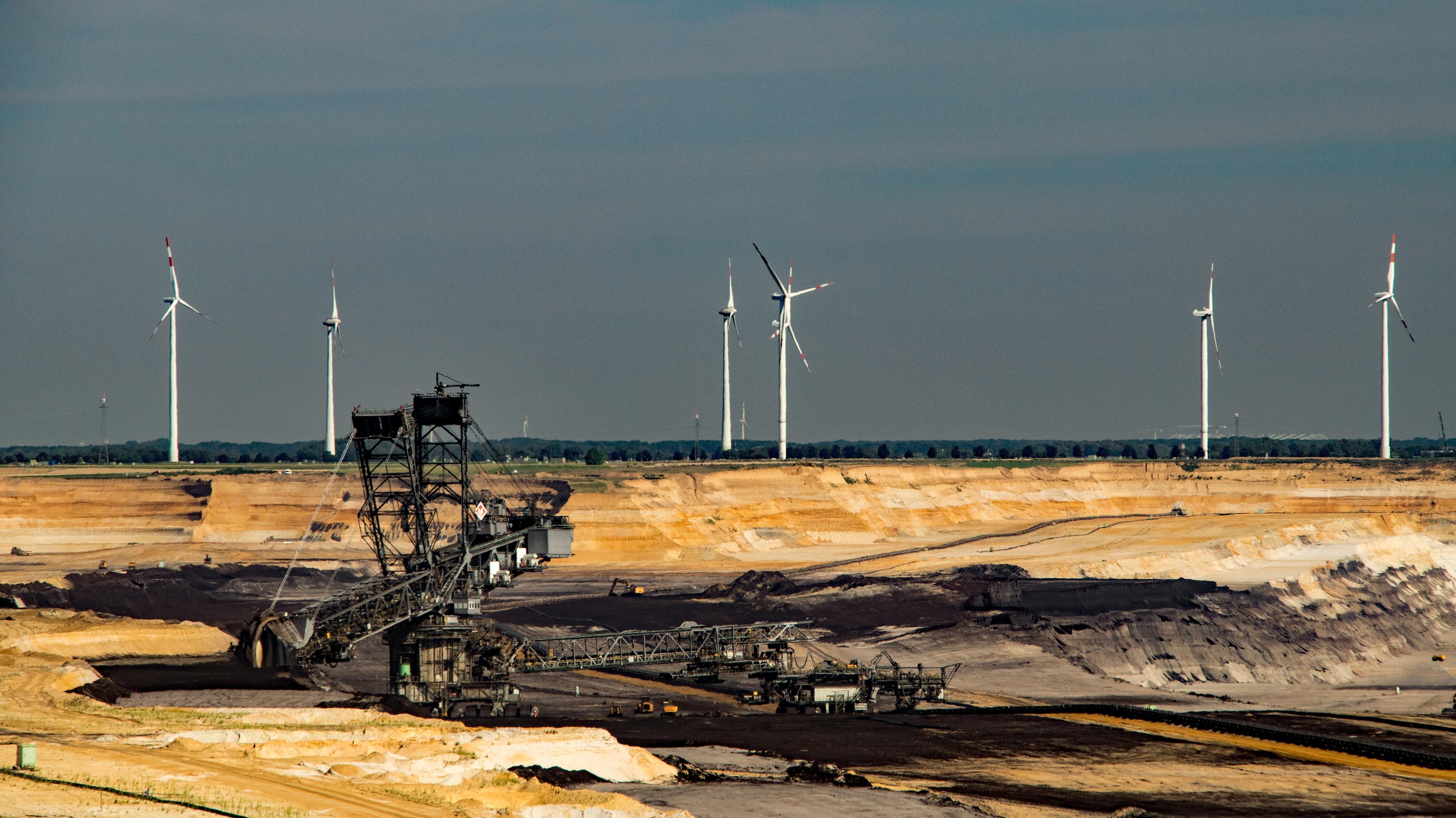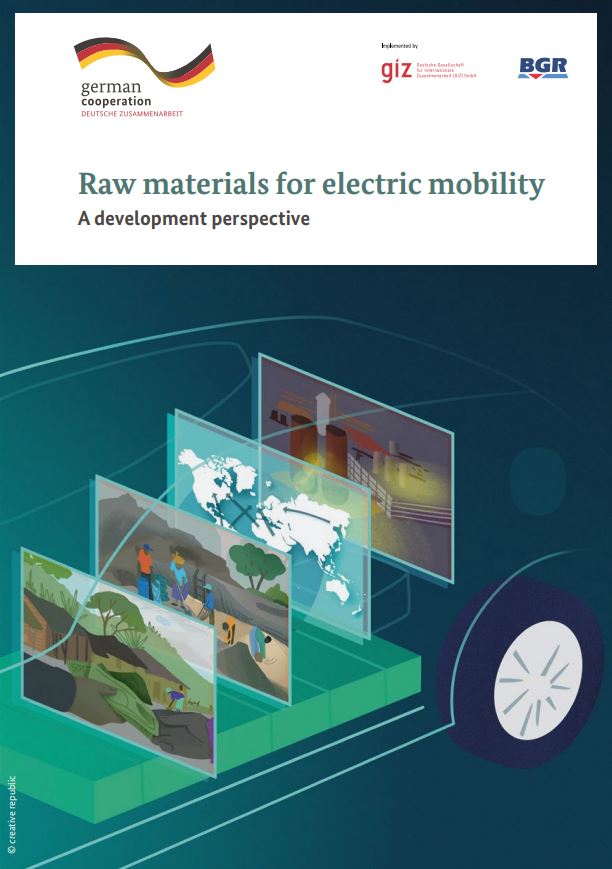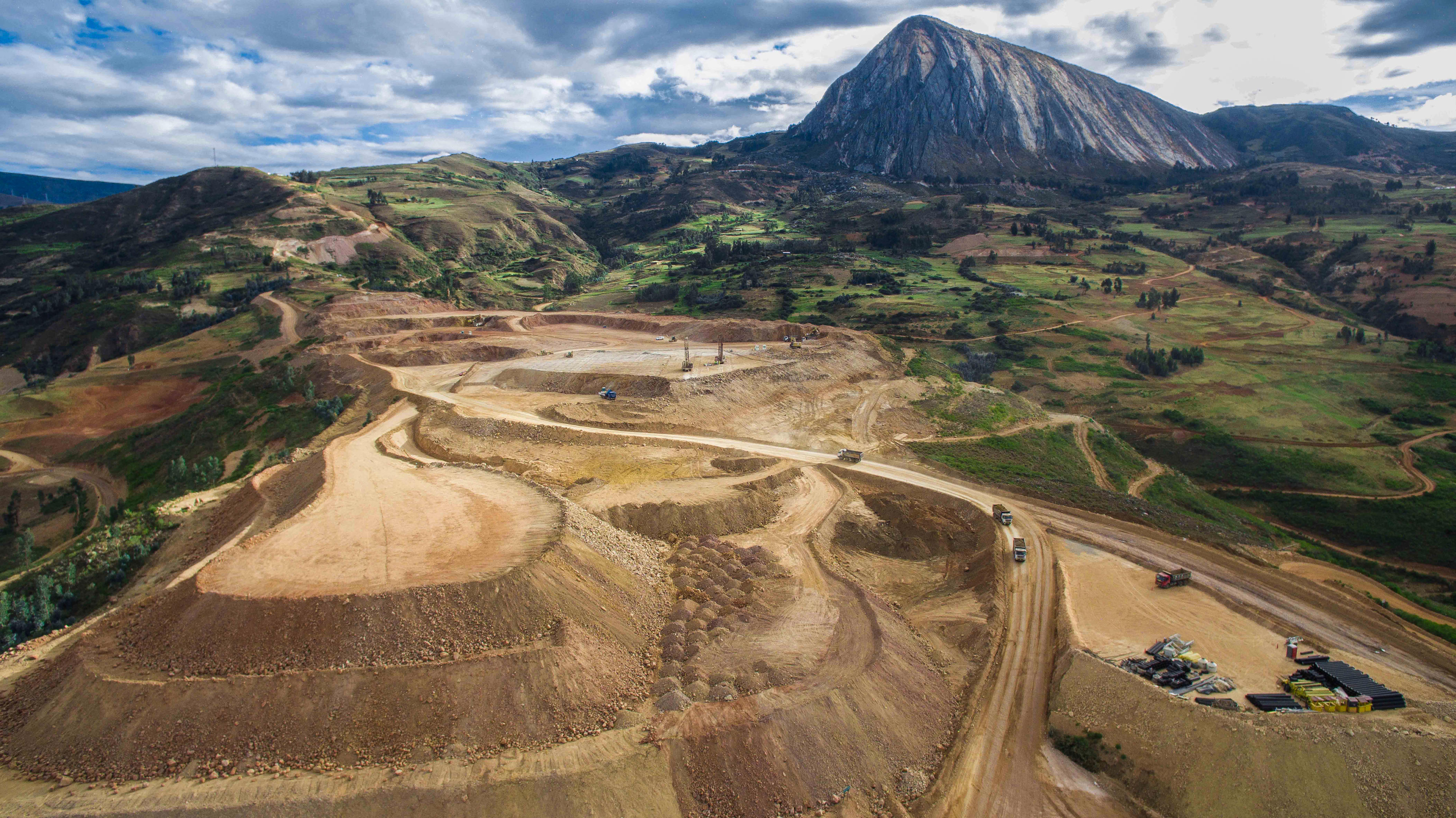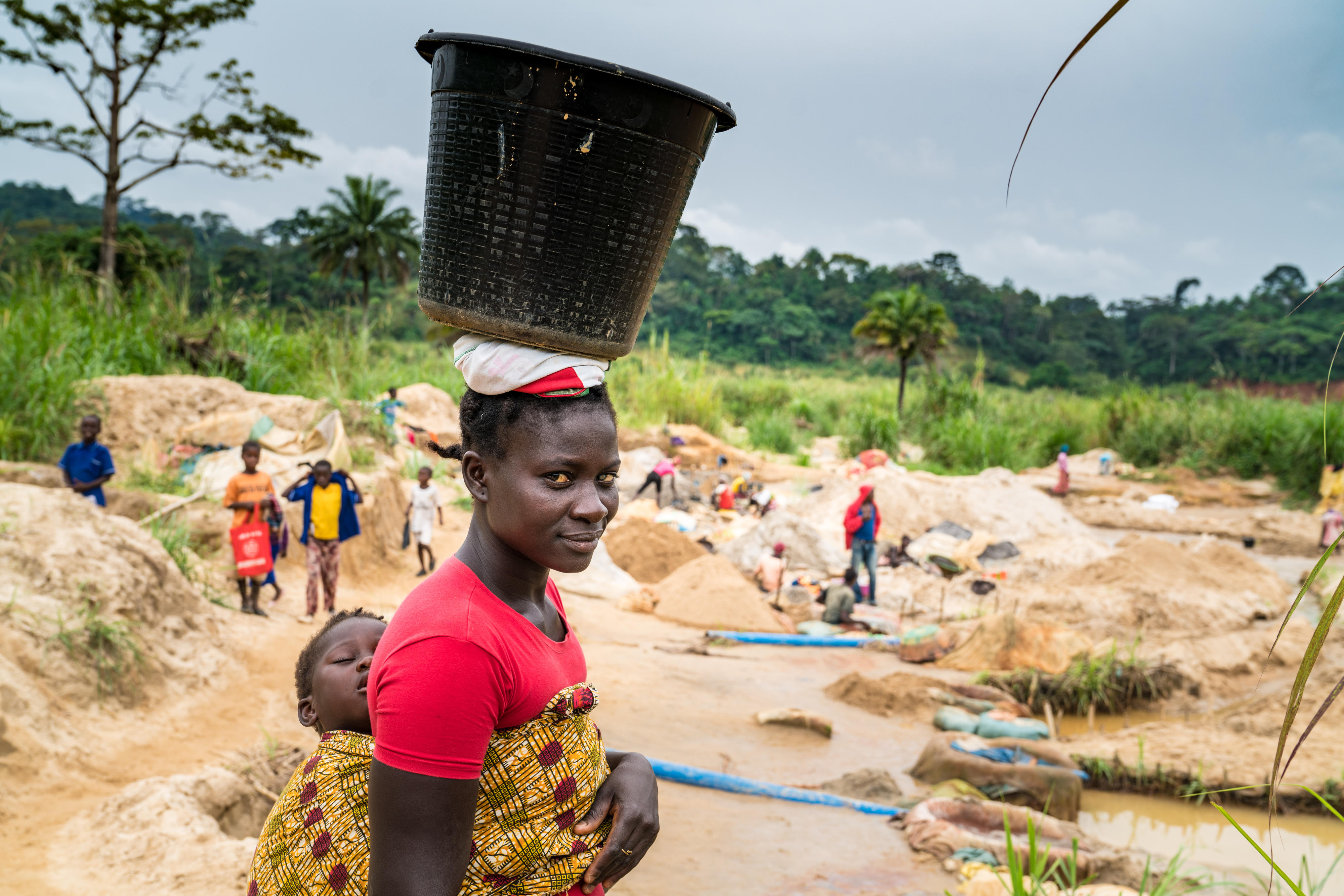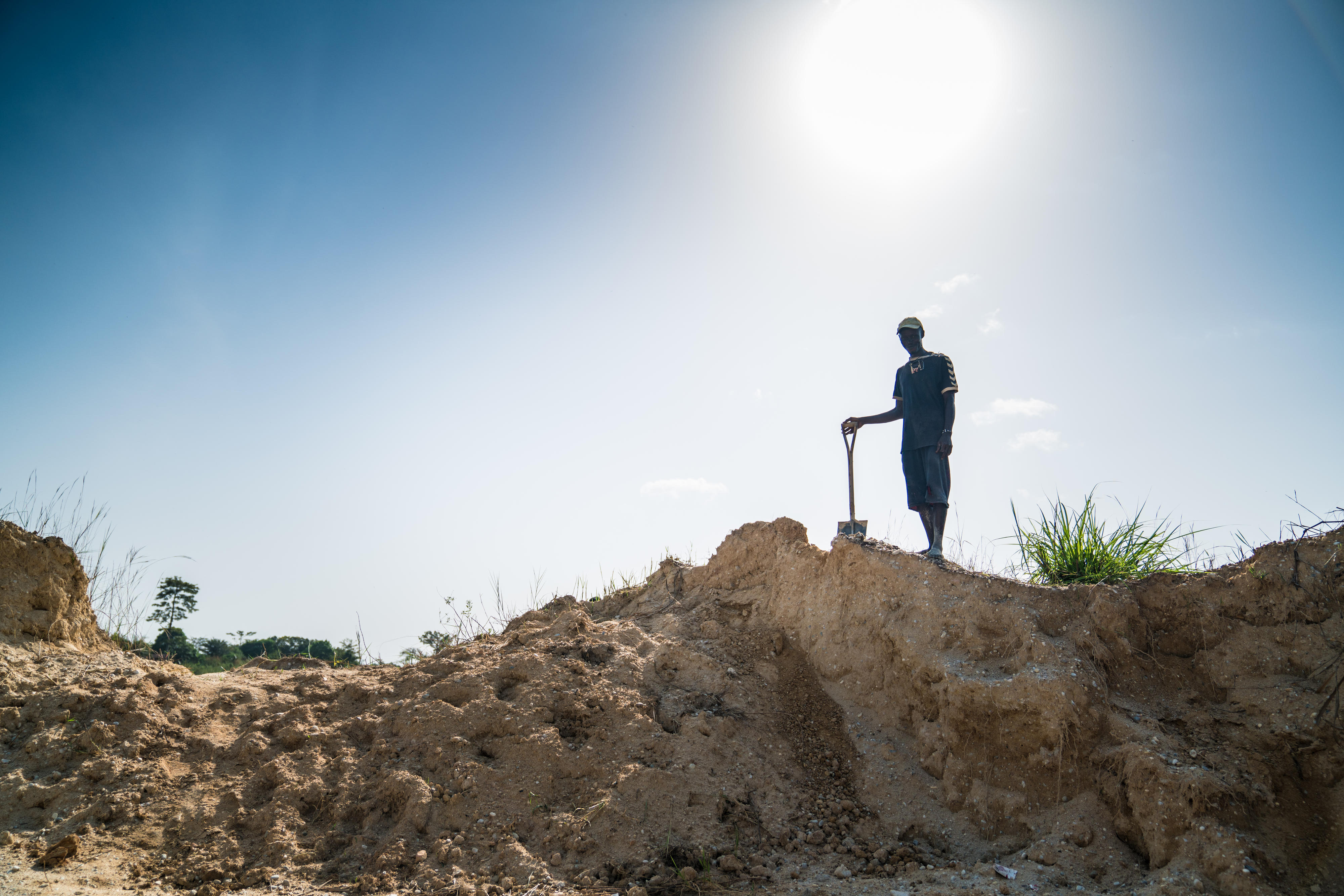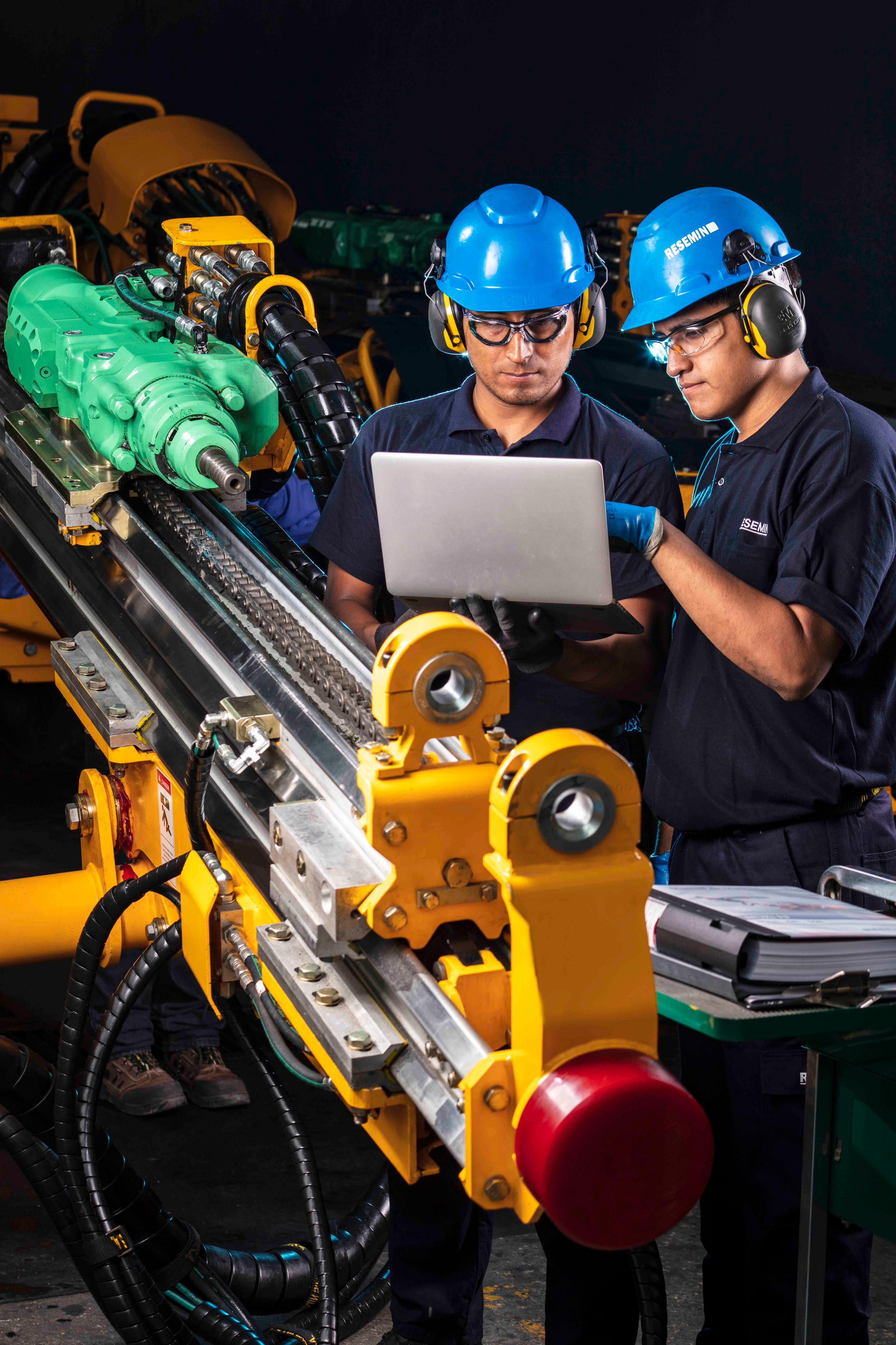Kohletagebau Garzweiler
Copyright© GIZ
Environment, Climate and Society Climate-Sensitive Mining
Background
The global energy and transport transition cannot be realized without mining. Without aluminum there are no solar cells, without copper no wind turbines and without lithium no batteries for electric vehicles. The more ambitious the climate targets become, the more raw materials are needed for renewable energy technologies and energy storage to enable the transition to a low-carbon future.
Two examples can illustrate this well:
- The demand for copper to produce electric cars is 2 - 6 times higher than that for conventional vehicles.
- A 3 MW wind turbine (on-shore) requires - depending on the design - up to 355 tonnes of steel, 4.7 tonnes of copper, 3 tonnes of aluminium and 2 tonnes of rare earth elements.
The increasing demand for raw materials represents an opportunity for resource-rich developing countries, for example, through greater integration into global value chains, higher revenues from the raw materials sector, and job creation. However, there are several risks and challenges associated with increasing mining activities. The answer lies in climate-sensitive and environmentally responsible mining.
Especially in developing and emerging countries, the expansion of mining is often related to increased social and environmental problems: Forests are cleared, infrastructure and settlements are expanded at the expense of existing land use patterns, and greenhouse gas emissions are released during the technical operation of mines. Mining is not possible without emissions or environmental damage. However, damages can be limited through forward-looking planning and the use of new technologies and compensated by measures such as subsequent renaturation. This requires holistic environmental management strategies for the extractive sector, implemented by companies and monitored by regulators. The relevance of sustainability in the extractive sector and stronger cooperation with resource-rich countries are moving into the focus of development policy.
Climate-sensitive mining
Mining is a major source of climate-damaging greenhouse gas emissions. In 2016, 12 of the world's largest mining companies released 214 million tonnes of CO2 emissions. This is comparable to the total emissions of the United Arab Emirates (206 Mt CO2). On the one hand, large-scale opencast mining alone releases enormous amounts of carbon previously stored in the soil. If forest areas are cleared for mining, even more emissions are released. Secondly, raw material extraction is energy-intensive. Most of the energy produced and purchased by mining companies is based on fossil fuels. This must change if the sector is to contribute to the Paris Agreement's goal of limiting the global temperature increase to 1.5 to 2 degrees Celsius. Reducing greenhouse gas emissions plays a significant role not only in mining, but along the entire value chain.
Sector Programme commitment
The mobility of the future must be sustainable. It should (1) meet the growing demand for mobility, (2) reduce damage to health from emissions, and (3) contribute to international climate protection goals by reducing greenhouse gas emissions. The supply of the necessary raw materials for the production of batteries for e-cars, for example, plays a central role here. The brochure Raw materials and electric mobility - A development perspective by the sector programme provides information on the developmental potential and the risks to be considered in detail.
German development cooperation is committed to the use of renewables at mine sites and the reduction of greenhouse gas emissions along the supply chain in order to support partner countries in meeting their Nationally Determined Contributions (NDCs).
In addition, the Sector Programme “Extractives for Development” has supported the World Bank in shaping the Climate Smart Mining (External link) (CSM) strategy. A dedicated CSM Trust Fund is designed to support projects that sustainably extract natural resources while limiting the impact of mining on climate change. More details on the CSM Facility can be found here. In addition, in its Raw Materials Strategy 2020, the German government has committed to supporting the World Bank in the expansion and further development of CSM (Measure 11).
